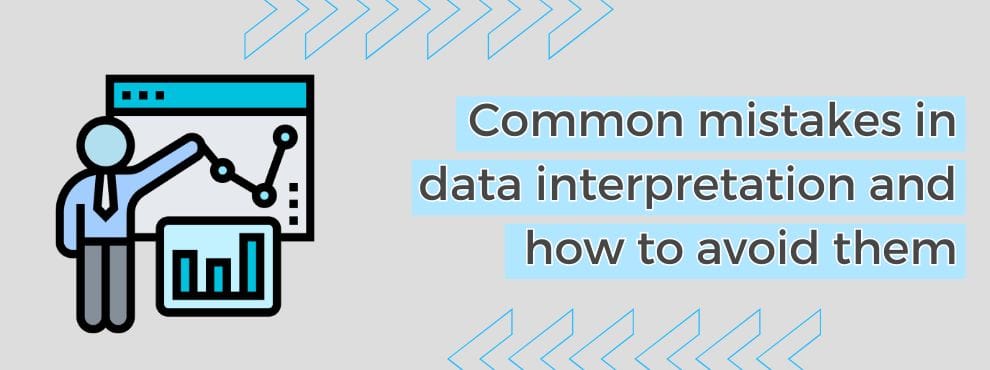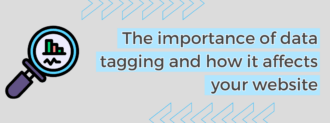The ability to accurately interpret data is critical to making informed decisions in the world of digital marketing and e-commerce. However, making mistakes in this process can lead to the wrong conclusions that affect business performance. In this article, we will explore some of the most common mistakes in data interpretation and how to avoid them to optimize analysis and improve strategies.
Table of contents
- 1 1. Confusing correlation with causation
- 2 2. Relying too much on averages
- 3 3. Ignoring the context of the data
- 4 4. Failure to clean data before analysis
- 5 5. Failure to segment data correctly
- 6 6. Overinterpreting data with small samples
- 7 7. Ignoring statistical significance
- 8 8. Getting carried away by cognitive biases
- 9 Conclusion
1. Confusing correlation with causation
One of the most common mistakes is to interpret a correlation between two variables as a causal relationship. For example, an increase in sales of a product may be observed at the same time as an increase in advertising investment. Although these events are related, it does not always mean that one caused the other.
The solution is to apply causal analysis methodologies, such as controlled experiments or A/B tests, to determine whether there is a direct relationship. It is also important to use analytical tools that provide information on causality to improve accuracy in interpretation.
2. Relying too much on averages
The use of averages is common in data analysis, but it can be misleading. If an online store reports an average spend per customer of 100 euros, this does not reveal extreme variations. There may be customers who spend much more and others who spend very little.
To avoid this error, it is essential to complement the average with other metrics such as median and mode, which provide a more accurate view of the distribution of the data. In addition, standard deviation analysis can help to understand how dispersed the values are with respect to the mean.
3. Ignoring the context of the data
Data do not exist in a vacuum; they are always influenced by external factors. Interpreting data without considering the context can lead to erroneous conclusions. For example, a decline in web traffic may not be the result of a bad marketing strategy, but of seasonal factors or external events.
The key to avoiding this mistake is to perform a contextual analysis. This involves comparing current data with previous periods, considering relevant events and analyzing market trends. This provides a more complete and realistic picture.
4. Failure to clean data before analysis
Uncleaned data contains errors, duplicates or outliers that can distort results. Without a proper cleaning process, conclusions will be unreliable.
To avoid this problem, it is critical to implement a data cleaning process prior to any analysis. This includes removing duplicates, correcting errors, and identifying outliers that could skew the results. Specialized software tools can automate much of this work.
5. Failure to segment data correctly
Grouping all data together without distinguishing between different customer or product segments can lead to misinterpretations. For example, analyzing the buying behavior of all customers without differentiating by age, location or purchase frequency can hide important patterns.
The solution is to segment data according to business-relevant variables. This enables a deeper understanding of behavioral patterns and facilitates the creation of customized strategies for different groups.
6. Overinterpreting data with small samples
Data obtained from small samples can be highly volatile and may not adequately represent the overall population. Decisions based on these samples have a high risk of error.
To avoid this situation, it is crucial to work with a statistically significant sample size. Analyses should be performed on sufficiently large volumes of data to ensure representativeness and reliability.
7. Ignoring statistical significance
Relating to data patterns without considering whether they are statistically significant can lead to biased results. A 2% change in conversion rate may not be relevant without determining whether that change is significant.
Statistical significance tests, such as t-tests or confidence intervals, help differentiate real changes from random variations. Using these tools improves the accuracy of interpretations.
8. Getting carried away by cognitive biases
Analysts are also susceptible to cognitive biases that affect data interpretation. For example, confirmation bias leads to seeking information that confirms preconceived ideas.
Combating bias requires maintaining an open mind and employing objective methodologies. Working with diverse teams and subjecting analyses to peer review can help identify potential biases and minimize them.
Conclusion
Avoiding common mistakes in data interpretation is essential to making better decisions in digital marketing and e-commerce. Understanding the difference between correlation and causation, properly cleaning and segmenting data, and applying rigorous statistical analysis are critical steps to improving accuracy. Implementing these practices will help transform data into valuable information that drives business success.
Related Posts







Deja un comentario